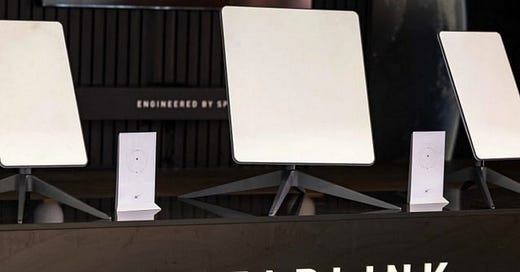The smallest widely available Starlink antenna is the Starlink Mini, which is significantly larger than a typical cellphone (about the size of a laptop or small tablet). There is a range of Starlink antenna offerings.
What are there specifications? What are there use cases?
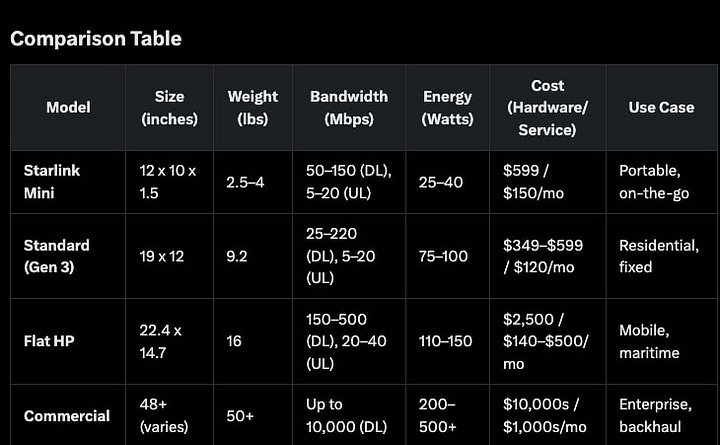
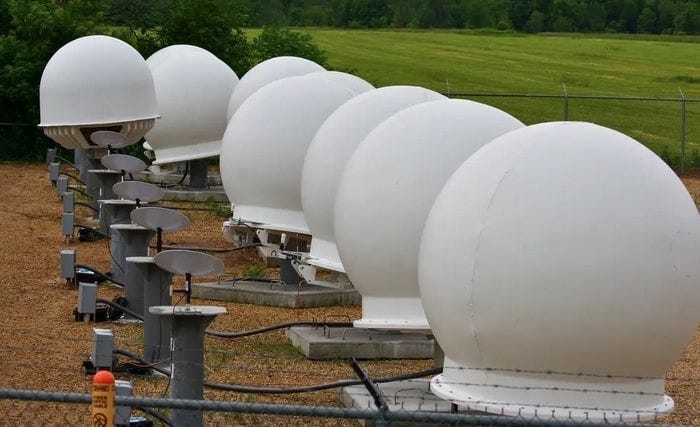
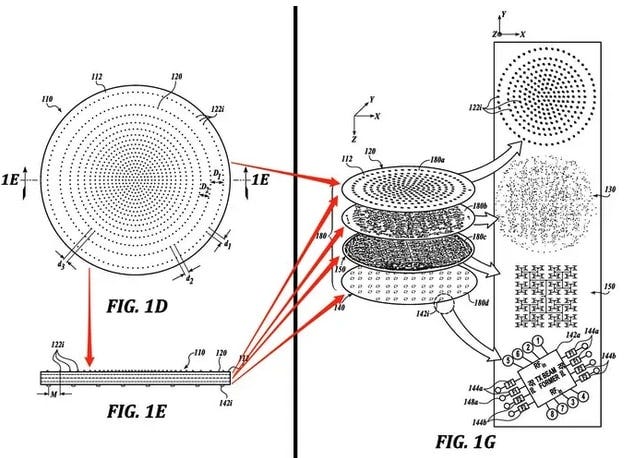
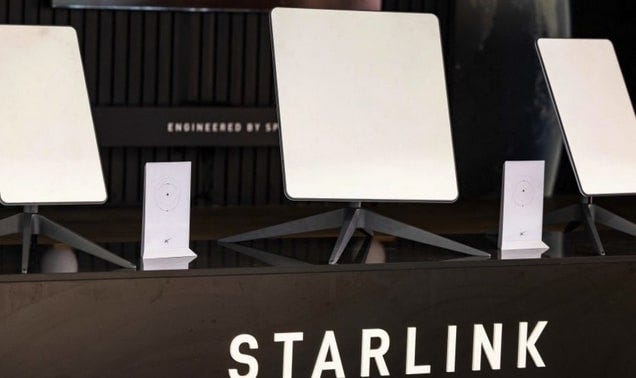
How Larger Version 3 Satellites Boost Signal Strength
The larger size of version 3 satellites offers significant advantages for signal transmission:
More Powerful Transmitters Larger satellites have stronger transmitters, which send more powerful signals to the ground.
Bigger Antennas Increased satellite size allows for larger antennas, which can transmit stronger and more focused signals.
Advanced Beamforming These satellites are likely to use improved beamforming technology, which directs signals precisely toward specific areas or devices. This enhances signal quality, especially for smaller ground antennas.
Together, these factors mean that version 3 satellites can deliver a stronger, more reliable signal compared to the current version 2 mini.
Viability of Lower-Power, Smaller Antennas
The combination of lower altitudes and larger satellites directly benefits lower-power, smaller antennas:
Reduced Antenna Gain Needed: With a stronger signal reaching the ground, antennas don’t need as much gain (signal amplification capability) to achieve a stable connection. This allows for smaller designs, like those potentially smaller than the current Starlink Mini dish.
Lower Power Requirements: Smaller antennas typically consume less power, which is ideal for portable devices or situations where energy efficiency is critical.
Potential Challenges: Smaller antennas often have wider beamwidths, which could pick up more interference from nearby satellites. However, advanced satellite-side technologies like beamforming and interference cancellation can help mitigate this issue.
These improvements make lower-power, smaller antennas not only viable but also practical for widespread use, especially in remote or underserved areas.
Small, Flat, and Passive Antennas for Satellite-to-Cellphone Use Cases
For satellite-to-cellphone communication, such as Starlink’s Direct-to-Cell (DTC) initiative, small, flat, and passive antennas could play a key role in enhancing performance:
What Are They?
Small: Compact enough to integrate into or attach to a cellphone.
Flat: Often designed as phased arrays, these antennas are thin and don’t require bulky dishes.
Passive: They don’t amplify signals themselves; they simply collect and focus what’s received from the satellite.
Benefits for Cellphones
Steerable Design: Flat phased-array antennas can electronically steer their beams to track fast-moving low Earth orbit (LEO) satellites like Starlink’s, without needing physical movement.
Improved Signal Reception: Even as passive devices, they can enhance the signal a cellphone receives by focusing it more effectively, supporting basic connectivity like texting or voice calls.
Compact and Practical: Their small, flat nature makes them suitable for portable use, potentially as an accessory or built-in feature for phones.
Performance Enhancement
Starlink’s DTC aims to connect unmodified smartphones directly to satellites for basic services. A stronger signal from lower altitudes and larger satellites already helps, but adding a small, flat, passive antenna could boost link quality further.
For example, it could improve data rates or reliability in challenging environments like rural areas or dense urban settings with interference.
Limitations
No Amplification: Passive antennas rely entirely on the satellite’s signal strength, so they may struggle with high-bandwidth tasks (e.g., video streaming) without additional hardware.
Cellphone Constraints: Phones have limited power and antenna space, so even with external passive antennas, performance is capped compared to dedicated satellite dishes.
Interference Issues Satellite-to-Cellphone Connectivity
The planned changes enable significant progress in satellite-to-cellphone use cases:
Direct Connectivity: Stronger signals could allow basic communication (e.g., SMS, voice) on unmodified smartphones, as Starlink is testing with its DTC efforts.
Enhanced Use with Accessories: Adding small, flat, passive antennas could push performance beyond basic connectivity, making satellite internet more versatile for cellphone users.
Remaining Challenges:
Interference: In crowded areas, smaller antennas might pick up unwanted signals, requiring advanced interference management.
Regulatory Limits: Frequency bands and power levels are constrained by regulations, which could limit performance.
Power Use: While passive antennas save power, any additional processing or active components could drain a phone’s battery.
Current Starlink Antenna Offerings
Starlink provides several antenna sizes tailored to different use cases, from residential to commercial and mobile applications. There’s no evidence of a cellphone-sized flat antenna (e.g., something akin to 3-6 inches long, like a smartphone), but here’s a breakdown of the known models:
1. Starlink Mini
Size: Approximately 12 x 10 x 1.5 inches (30 x 25 x 4 cm) – roughly laptop-sized.
Weight: Around 2.5 lbs (1.1 kg) without accessories, up to 4 lbs with cables and mount.
Bandwidth:
Download speeds: 50–150 Mbps (some tests report up to 292 Mbps in ideal conditions).
Upload speeds: 5–20 Mbps (tested up to 14.5 Mbps).
Latency: 23–60 ms.
Energy Usage: 25–40 watts (low-power design, can run on USB-C power banks).
Cost:
Hardware: $599 (early access price in the U.S.; SpaceX aims to reduce this over time).
Service: $150/month ($120/month Residential + $30/month Mini Roam addon) with a 50 GB data cap, $1/GB thereafter.
Use Case: Portable, on-the-go internet for travelers, campers, or rural users needing lightweight connectivity. Features a built-in Wi-Fi router for simplicity.
Notes: Introduced in mid-2024, it’s the smallest consumer option, designed for mobility and ease of use.
2. Starlink Standard (Gen 3)
Size: 19 x 12 inches (48 x 30 cm), roughly pizza-box-sized, with a detachable kickstand.
Weight: Approximately 9.2 lbs (4.2 kg) with cables.
Bandwidth:
Download speeds: 25–220 Mbps (typically 100+ Mbps for most users).
Upload speeds: 5–20 Mbps.
Latency: 25–60 ms.
Energy Usage: 75–100 watts (peaks higher during startup or heavy use).
Cost:
Hardware: $349–$599 (varies by region and availability).
Service: $120/month (Residential plan in the U.S., unlimited data with fair use policy).
Use Case: Fixed residential or small business use in rural or underserved areas. Suitable for households with moderate bandwidth needs (up to 200 users, 3,200 sq ft Wi-Fi coverage).
Notes: The standard consumer option, widely available since 2021 with iterative improvements.
3. Starlink Flat High Performance (HP)
Size: 22.4 x 14.7 inches (57 x 37 cm) – slightly larger than the Standard dish.
Weight: Around 16 lbs (7.3 kg) with cables.
Bandwidth:
Download speeds: 150–500 Mbps.
Upload speeds: 20–40 Mbps.
Latency: 25–60 ms (lower in optimal conditions).
Energy Usage: 110–150 watts (higher due to enhanced capabilities).
Cost:
Hardware: $2,500.
Service: Starts at $140/month (Priority plans), up to $500/month for premium tiers.
Use Case: Mobile and maritime applications (e.g., RVs, boats, or businesses on the move). Designed for in-motion use with a wider field of view and higher reliability in harsh conditions.
Notes: Replaces the older High Performance dish; approved for in-motion use by the FCC.
Keep reading with a 7-day free trial
Subscribe to next BIG future to keep reading this post and get 7 days of free access to the full post archives.

